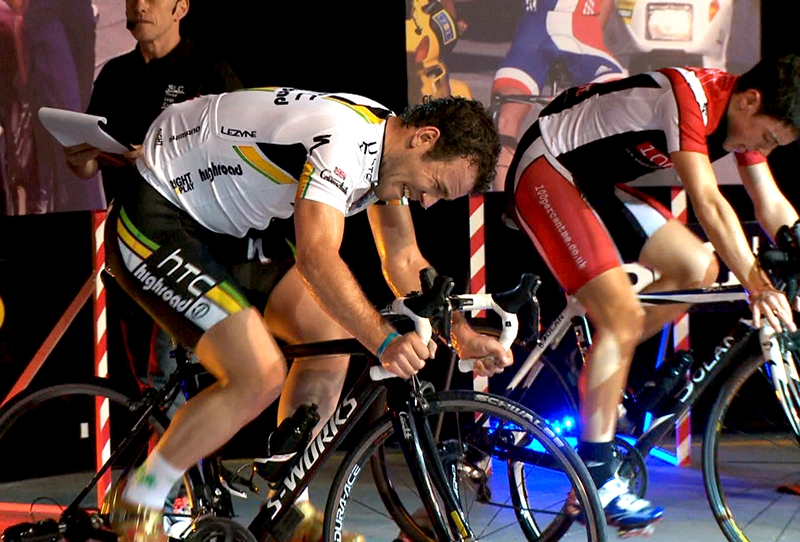You are viewing 1 of your 1 free articles. For unlimited access take a risk-free trial
Training intensity: what recovery price will you pay?

New research looks at the physiological demands of low, medium high and very high-intensity training, and the implications for athlete recovery
When performance is paramount, knowing your ideal training intensity and targeting that intensity is important because different energy systems are used to generate energy in the muscles at different intensities. When training at a low to moderate intensity, much of the energy required is produced from the oxidation of fat. When training high intensities, nearly all of the energy is supplied from the breakdown of carbohydrate without oxygen.Energy systems and intensity
In race conditions, athletes – especially those in sports that require both endurance and bursts of speed/power - will be deriving energy from at least three different energy systems, which means that they all need to be trained. In simple terms, muscles are fuelled by four distinct energy systems of which three are trainable. Thanks to Nature’s ingenuity, these energy systems are seamlessly integrated together, which is why it’s not apparent that energy use changes as an athlete works harder and harder. These trainable energy systems are:- The creatine phosphate (CP) system
- The lactate system
- The aerobic system
Figure 1: Schematic representation of contribution over time of the body’s energy systems

Pink = ATP system (instantaneous efforts up to 10 seconds); blue = CP system (sprint efforts up to 60 seconds); green = lactate system (high-intensity work 1-5 minutes); black = aerobic system (primarily endurance 5+ minutes).
A quick look at figure 1 shows the contribution these energy systems make to total energy demand during different durations of maximum sustainable exercise. Notice how each system overlaps with the one it precedes. This is necessary for seamless integration of the systems. So while there are discreet ‘zones’ corresponding to the different energy systems, the boundaries of these zones are rather ‘fuzzy’. It follows that if the kind of event an athlete trains for places demands on more than one energy system (it nearly always does), he/she will need to target each energy system with specific intensities of training in order to achieve a competition-ready state of fitness.
Recovery demands
When constructing a training program, athletes will typically (or at least should!) combine different intensity training sessions to train all the energy systems. For example, in addition to skills training, strength and conditioning work and match play, a weekly fitness program for a soccer player might include a couple of sessions of moderate to brisk intensity runs of 30 minutes to target the aerobic system, a session of long intervals of 2-3 minutes to target the lactate system and a session or two of very high-intensity sprint intervals to target the CP system. But while these elements can be readily combined in a number of different ways, a question that arises is what physiological impact effect does a particular type of session have on the body, and how does this impact performance in subsequent sessions and the amount of recovery required?New research
Surprisingly, there’s been relatively little research into this topic. But a new study on the impact of different intensity training sessions in runners has just been published by Finnish scientists, which provides some fascinating insights(1). In this study (titled: ‘Acute Physiological Responses to Four Running Sessions Performed at Different Intensity Zones’), researchers investigated the immediate responses and the post 24-hour recovery impacts of four different intensities of running sessions. A total of 24 recreationally endurance-trained male subjects performed the following sessions on a treadmill, each on separate occasions. These were as follows:- A 90-minute session of low-intensity running (to target the aerobic system).
- A 30-minute session of moderate intensity running (to target the aerobic system with some lactate system involvement).
- Six high-intensity 3-minute intervals (mainly lactate system with some aerobic system involvement).
- Ten supra-maximal intensity 30-second intervals (to target mainly the CP system).
The findings
The main findings were as follows:- As you might expect, heart rate variability decreased acutely after all sessions indicating increased physiological fatigue.
- The decrease in HRV was greater after moderate-intensity training compared to low-intensity training, but there was also a greater decrease when performing moderate-intensity training compared to supra-maximal intervals, suggesting that the very intense intervals generated LESS physiological fatigue than moderate-intensity training.
- Immediately after training, countermovement jump performance decreased after the low-intensity training and supra-maximal training, but not after the moderate-intensity or high-intensity training
- After 24 hours following supra-maximal intervals, countermovement jump remained decreased whereas it had recovered after low-intensity training.
- During the submaximal running tests, the subjects’ levels of perceived exertion remained elevated after the high and supra-maximal intensity intervals but not after the low and moderate intensity runs.
Implications for athletes and coaches
Looking at these results, what do they mean for athletes and coaches trying to optimally structure a training program? The first thing to note is that moderate-intensity training can produce more physiological fatigue than might be appreciated, and than the very-high intensity sessions. Therefore, a program built around lots of moderate-intensity training (a common occurrence) is likely to result in poor recovery and excessive fatigue, while not properly developing and improving the kind of high-intensity performance needed in race or competition situations. This observation provides further evidence in favor of a polarized approach to training (emphasizing low-intensity and very high-intensity sessions), which you can read about here.The second observation is that countermovement jump performance (a measure of dynamic strength) was decreased after the low and supra-maximal sessions. Therefore, skill training and practice for athletes that involves dynamic/power movements should not be carried out right after low or very high-intensity training sessions. This decrease was still evident after 24 hours following supra-maximal training, which suggests athletes should not perform dynamic/power movements as part of skill training until 48 hours after these kinds of very high-intensity sessions.
A third observation is that athletes performing sub-maximal exercise after the high and supra-maximal intensity intervals perceived more effort for the same running speed than after the lower and moderate level sessions, even though the duration of these sessions was longer. Therefore, if a session contains a mix of high/very high and low/moderate intensities, it might be feel easier for athletes to perform the high-intensity efforts towards the end of the session. This approach also ensures athletes will be well warmed up for the high-intensity work to come!
References
- Int J Sports Med. 2020 Nov 11. doi: 10.1055/a-1263-1034. Online ahead of print
Related Files
Newsletter Sign Up
Testimonials
Dr. Alexandra Fandetti-Robin, Back & Body Chiropractic
Elspeth Cowell MSCh DpodM SRCh HCPC reg
William Hunter, Nuffield Health
Newsletter Sign Up
Coaches Testimonials
Dr. Alexandra Fandetti-Robin, Back & Body Chiropractic
Elspeth Cowell MSCh DpodM SRCh HCPC reg
William Hunter, Nuffield Health
Keep up with latest sports science research and apply it to maximize performance
Today you have the chance to join a group of athletes, and sports coaches/trainers who all have something special in common...
They use the latest research to improve performance for themselves and their clients - both athletes and sports teams - with help from global specialists in the fields of sports science, sports medicine and sports psychology.
They do this by reading Sports Performance Bulletin, an easy-to-digest but serious-minded journal dedicated to high performance sports. SPB offers a wealth of information and insight into the latest research, in an easily-accessible and understood format, along with a wealth of practical recommendations.
*includes 3 coaching manuals
Get Inspired
All the latest techniques and approaches
Sports Performance Bulletin helps dedicated endurance athletes improve their performance. Sense-checking the latest sports science research, and sourcing evidence and case studies to support findings, Sports Performance Bulletin turns proven insights into easily digestible practical advice. Supporting athletes, coaches and professionals who wish to ensure their guidance and programmes are kept right up to date and based on credible science.













